Comparing Snapdragon 810 v2 and v2.1: More Memory Bandwidth, Higher Clocks
by Joshua Ho on June 18, 2015 9:00 AM EST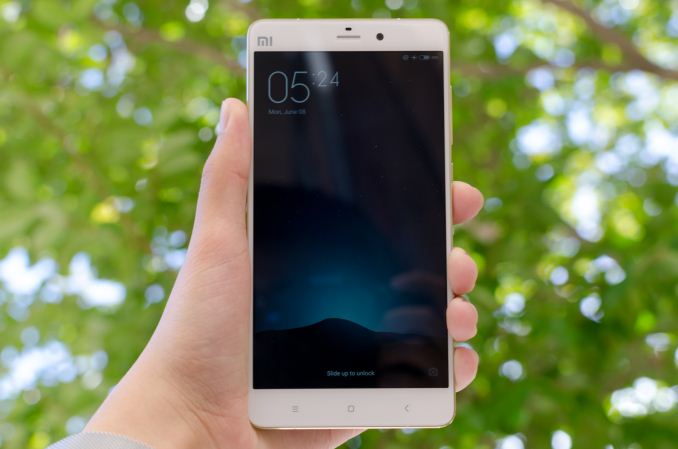
Around a few weeks before the launch of the Xiaomi Mi Note Pro, I was digging through kernel source to understand Snapdragon 810 and some other Qualcomm SoCs. We had kept track of MSM8994v1 and MSM8994v2, which were relatively well understood in terms of what they represented. V1 was an engineering sample variant, which was discussed as early as September in 2014. This variant set both the A57 and A53 clusters to a ~1 GHz maximum. V2 was the first mass production revision, which was present in both the LG G Flex 2, and HTC One M9. However, shortly before the launch of the Mi Note Pro, we noted references to v2.1 in various kernel source trees.
Immediately diving into the issue, what I found was that there wasn’t much of note about v2.1 other than a change to the chip ID and other identifying information, so any formal information on the changes between these revisions is scarce. Meanwhile phones that definitely didn’t have this variant of the SoC still had references to it in kernel source, which only made it all the harder to even identify v2.1 devices in the first place. Ultimately the only way to truly verify whether a device has a certain revision of an SoC is to either see whether the file is included in the compilation process or to verify the revision by checking the device itself.
Our big break came with the release of the Xiaomi Mi Note Pro, which was among the first (if not the first) devices to incorporate a v2.1 SoC. After getting our hands on a sample of the Mi Note Pro, we were finally able to start piecing together everything in order to really understand what was going on with this new variant.
The first and most obvious change in v2.1 is a mild increase in GPU clocks from 600 to 630 MHz. This represents around a 5% increase in performance, which helps to close the gap with the 772-700 MHz Mali T760MP8 graphics processor used in the Exynos 7420 of the Samsung Galaxy S6. This is fairly obvious to anyone that runs a graphics benchmark on this new variant, although this is a best-case improvement as inefficiencies elsewhere can erode the difference.
The other differences are far more subtle. The first is that there’s noticeably less throttling on the A57 cluster compared to Snapdragon 810 v2. However even with that change - and unlike the Snapdragon 808 and competing SoCs - both variants of the Snapdragon 810 still see the unfortunate characteristic of ultimately forcing all threads off of the A57 cluster to stay within TDP limits in high load conditions, such as when running Basemark OS II’s battery test.
The second difference requires testing peak CPU bandwidth and latency between L1, L2, and main memory, which required digging into our in-house benchmark tools. In the interest of seeing 810's maximum memory bandwidth, we put together a memory multithreaded memory benchmark that runs on multiple CPU cores, and combines read and write bandwidth to try and get as close as possible to maximum bandwidth available. The figures that we present here will represent a scenario where two threads, one reading and one writing will load the memory system simultaneously. This is done to try to saturate the main memory controller and to circumvent some of the quirks of ARM's bus architecture, which has dedicated read and write ports, leading to only half the total possible bandwidth in each direction.
We’ve also tested against multiple other applications such as Rahul Garg’s RgBandwidth and RamBench to verify these observations. We also checked with instrumented runs that the CPU, memory controller, and CCI interconnect were all running at appropriate frequencies so these results should be largely unaffected by the governor due to the 100% duty cycle of the load during the test.
The graphs above are interesting, but they don’t really illustrate the relative difference between v2 and v2.1. To better show this, the graphs below represent the percent difference between the HTC One M9 and Xiaomi Mi Note Pro in this test, where positive values are an advantage in favor of Mi Note Pro, while negative values represent an advantage in favor of the One M9.
From the calculations, memory latency improves on an average of 15%, but this is mostly concentrated in the L1/L2 cache portion of the test, while the differences in DRAM are relatively small. If we change the scaling to show less of main memory, we can see that most of the variance is present in that portion of the test. Given that we’re looking at time on the order of nanoseconds, I wouldn’t think too hard about these differences either. The only interesting thing to note in the latency test is that the “memory mountain” model is still valid, where we can expect about an order of magnitude increase in latency for each level of cache that we miss, where L1 appears to take about 5 cycles at 2 GHz, then around 15 cycles for L2, then around 600-700 cycles for main memory. (To put that into comparison for PC CPUs, L3 cache usually hits up to 70 cycles and up to 150 cycles for Intel's CrystalWell eDRAM before the jump out to main memory.)
The memory bandwidth values are really much more interesting though, as there’s a consistent improvement in bandwidth across the board. There is some interesting behavior around L1 cache, but this is likely due to the previously mentioned ramp time for frequency scaling. If we just look beyond L2, into the main memory, the result is that there’s around a 33% increase in bandwidth, and a 38% average increase if we look at the entire sweep through memory.
Overall, for a 0.1 revision, Snapdragon 810 v2.1 is a pretty significant change where memory is concerned. We also see some improvements in terms of thermal management, but we yet have to fully characterize just how much this improvement is and if it's enough to be able to compete with Samsung's 14nm silicon in the Galaxy S6.
Meanwhile there were rumors floating around of a new revision due to show up in the summer, and it appears that this is the rumored revision. This leads me to question whether it made sense to release devices with the v2 revision, especially if future revisions would have resolved some notable issues and dramatically improved SoC performance. I also question whether OEMs would silently introduce these SoCs into later production runs of products that first shipped with v2, which is yet another can of worms.
Putting these questions aside, this new revision brings much-needed improvements to the Snapdragon 810, and should go a long way as a stop-gap until Snapdragon 820 begins shipping. We'll see how the change from v2 to v2.1 affects performance on a higher level in our Xiaomi Mi Note Pro review coming shortly.


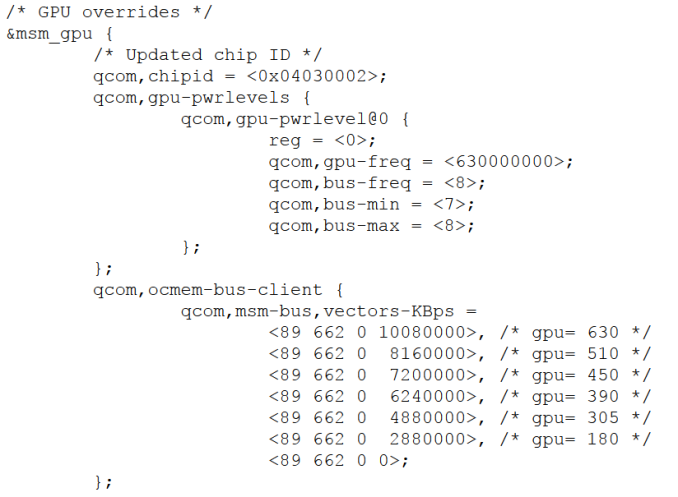
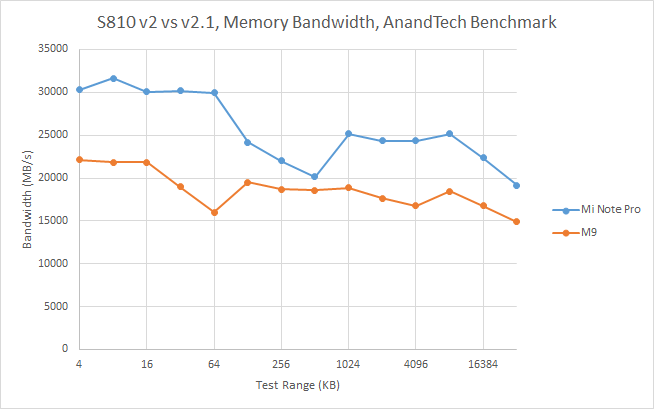
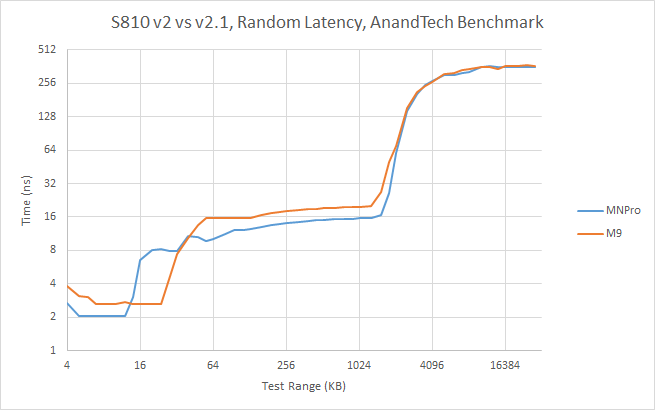
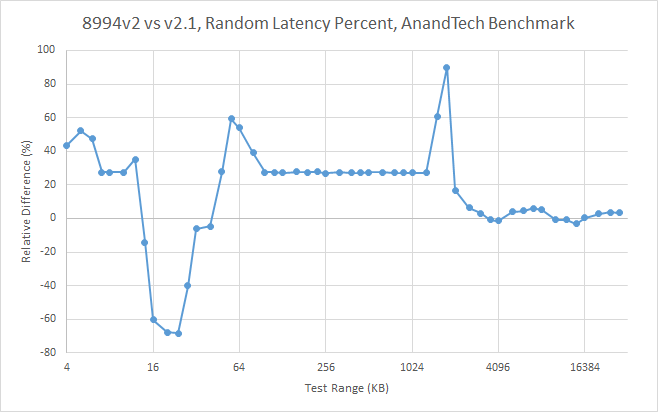
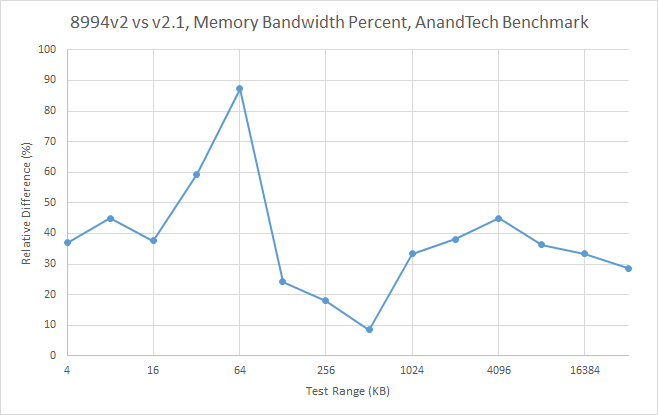








84 Comments
View All Comments
max1001 - Friday, June 19, 2015 - link
Multi-tasking is the reason you want faster soc and more ram. For power users, it's not uncommon to be updating apps in Play Store while streaming music and playing games or browsing at the same time. Hell, I know people who torrents from their phone.testbug00 - Friday, June 19, 2015 - link
yes, but, what part of that is CPU intensive. That's the part I'm missing. 8 A53 cores will do that just as well as the 810 will.Most games target low-mid range phones. Most games don't require over A9 performance. Likely a fraction of a percent require over the performance of 2 A15 cores.
jospoortvliet - Sunday, June 21, 2015 - link
You can stream music while torrenting 2 movies on a single A7 core at 1ghz without problem, this doesn't load a modern CPU much. Browsing similarly uses most power through the screen which has to be on... Only the initial page load is heavy. YouTube is even not that heavy. It is starting apps, and installation and upgrade which is heavy but you can only spend so many minutes per day doing install and upgrade... For me, upgrades run at night while I sleep, seems a sane way of doing that.
Games and benchmarks, together with taking and editing pictures and movies are among the few things which cause sustained high loads in normal use.
I wont say that playing music any torrenting while browsing does not use a lot of power: but that goes to the screen, the network and a bit to the headphones. Not the CPU!
nikaldro - Monday, June 22, 2015 - link
Don't forget that using all those components at the same time builds up a lot of heat, wich further holds performance back.Plus all those tasks can fill up the RAM, hurting performance even more.
The raw CPU grunt is not the only problem, really.
lefty2 - Thursday, June 18, 2015 - link
I believe the overheating rumours of the 810 were about the V1 engineering sample, not the production versiongreyhulk - Thursday, June 18, 2015 - link
Yeah? Then why are so many reviews of phones carrying the 810 pointing out the overheating as an issue? Every single phone that's currently out on the market with a Snapdragon 810 overheats. The only thing they did to mitigate it on the M9 was underclock it. It's an issue. They should have just quietly buried the 810 and moved on. LG and Samsung were wise not to adopt it on their flagships.Freaky_Angelus - Thursday, June 18, 2015 - link
No, the M9 had a benchmark-cheat going nuts and ran very hot in a single benchmark. Every phone has throttling, that's not new and has been there for years. However if you run at maximum performance and have a wrongly set throttling point, then yes... You get an egg cooker ;)As for the rumors, yes those are about the V1 engineering sample. Rumors which are hinted at being from Samsung, which suddenly has it's own chip that needs selling. http://www.gsmarena.com/qualcomm_snapdragon_810_fo...">The 810 is actually rumored to run cooler than the 801, so throttling has been around for a while but the 810 might be a bit more powerful than anticipated and thus creating throttling issues.
Martin84a - Thursday, June 18, 2015 - link
http://arstechnica.com/gadgets/2015/04/in-depth-wi...Freaky_Angelus - Friday, June 19, 2015 - link
Yup, thnx for that link. Hadn't seen an in-dept throttle analysis yet and clearly pointing out the problem.The fun part is that that test is designed to see when it would hit throttling if you put it in full stress. In a comparison of tasks, http://www.phonearena.com/news/Qualcomm-Snapdragon...">the article I was trying to link to or it's http://www.stjsgadgets-portal.com/2015/02/snapdrag...">source show that it runs cooler as a SoC. Still, something that runs cooler compared to previous versions may still boil egg's for you ;)
In real life, it's also what I noticed with the M9. It runs cooler than my M7 of friends M8 when performing the same tasks as it's obviously a newer SoC with newer support. In addition, as an HTC user I've gotten used to 'hot phones' as the alu-body always feels warmer thanks to it's fast dissipation properties.
Freaky_Angelus - Friday, June 19, 2015 - link
Ok, last attempt...http://www.phonearena.com/news/Qualcomm-Snapdragon...
http://www.stjsgadgets-portal.com/2015/02/snapdrag...
Otherwise, just paste these lines (no idea why they won't link proper with the url tag...
http://www.phonearena.com/news/Qualcomm-Snapdragon...
http://www.stjsgadgets-portal.com/2015/02/snapdrag...